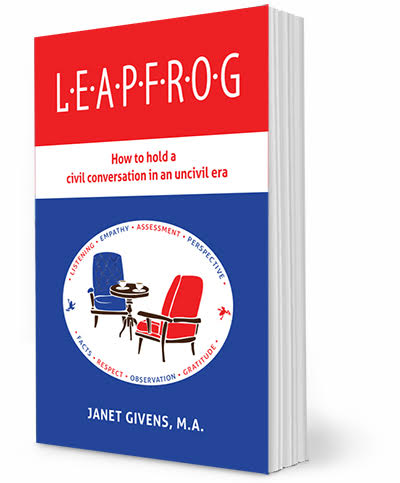Life was so much simpler back when that divide between “Us” and “Them” was obvious, easy.
In my early years, I was among “the saved” while the rest of the world were, quite literally, “going to hell.” How surprised I was when I discovered a woman I’d thought firmly ensconced in the “going to hell” group who told me she’d been taught the same thing — about me!
Back then there was always a right and a wrong, a good and an evil (well, bad in any event).
Absolutes? Absolutely.
That mind set made my early years easy to navigate. I was “Us” and I stayed away from “Them.” But as I grew older, I also grew more alienated from the “Us” I’d grown up with and found that the “They” were growing on me. I switched camps. Life remained a dichotomy.
Sailboaters were different from motor boaters (I’ve married one of each); Republicans were different from Democrats (again: one of each). And I have, at separate times, owned and loved both a Mac and a PC. Still though, never the twain did meet.
I came to appreciate how this automatic “othering” served our evolutionary ancestors who wanted to survive in a threatening world. But this is the twenty-first century and our pre-frontal (rational) lobes are better developed.
Somewhere during my fourth decade I discovered that black and white often merge into a fairly grey, muddy middle. Life became more complicated when I could no longer rely on the absolutes; and I became curious and eager to understand whatever “them” had presented itself. It was an exciting time.
Curiosity continues to serve me as the world falls into new dichotomies: vaccinated vs. unvaccinated, the masked vs. the unmasked, science-minded positivists vs. the astrology set, expert admiring vs expert fearing. Their rigidity saddens me but I stay curious, open to new ideas they can teach me, wishing only they were as curious about me.
But there is one “other” that I still struggle with.
Trumplicans. Anyone wearing a MAGA red hat.
How easy it has been to fall back into that “Us” versus “Them” mindset. (Sometimes that early programming never really goes away; we just learn to keep it reined in). How much simpler my world would be if I could still disdain that “other,” pity them, hate them.
Oh how I’d enjoy that; simplicity itself.
And don’t we all know we can’t afford to let that happen.
As a result, I am marketing LEAPFROG once again. Subtitled How to hold a civil conversation in an uncivil era, it is mostly a compilation of good advice from many sources (My Resources section in the back is 18 pages long) including how to listen with empathy, build a bridge across a chasm, or keep peace at the Thanksgiving table. I wish there was something on the value of humor, but I’ll let my readers find that.
This Fifth Edition has some changes.
- I’ve woven in a few of my own examples — times when I was not prepared to engage in a topic of disagreement.
- It includes a new P chapter (formerly Paraphrase, an important component now woven within the Listen chapter) now standing for Perspective.
- There’s also a rewritten Respect chapter.
CAUTION: This is not a book to read in one sitting; it’s simply too dense. It will take practice and it will take support to keep the momentum going. I’m hoping to see already existing groups adopt the book and work through it together, over time, perhaps weekly. If you’re not already in a small group of people you trust, I urge you to put one together.
Here’s the link to LEAPFROG with a bit more information and link for purchase.

How about you? Where are you in accepting foreign points of view or respecting those you just don’t like?
Leave a Reply